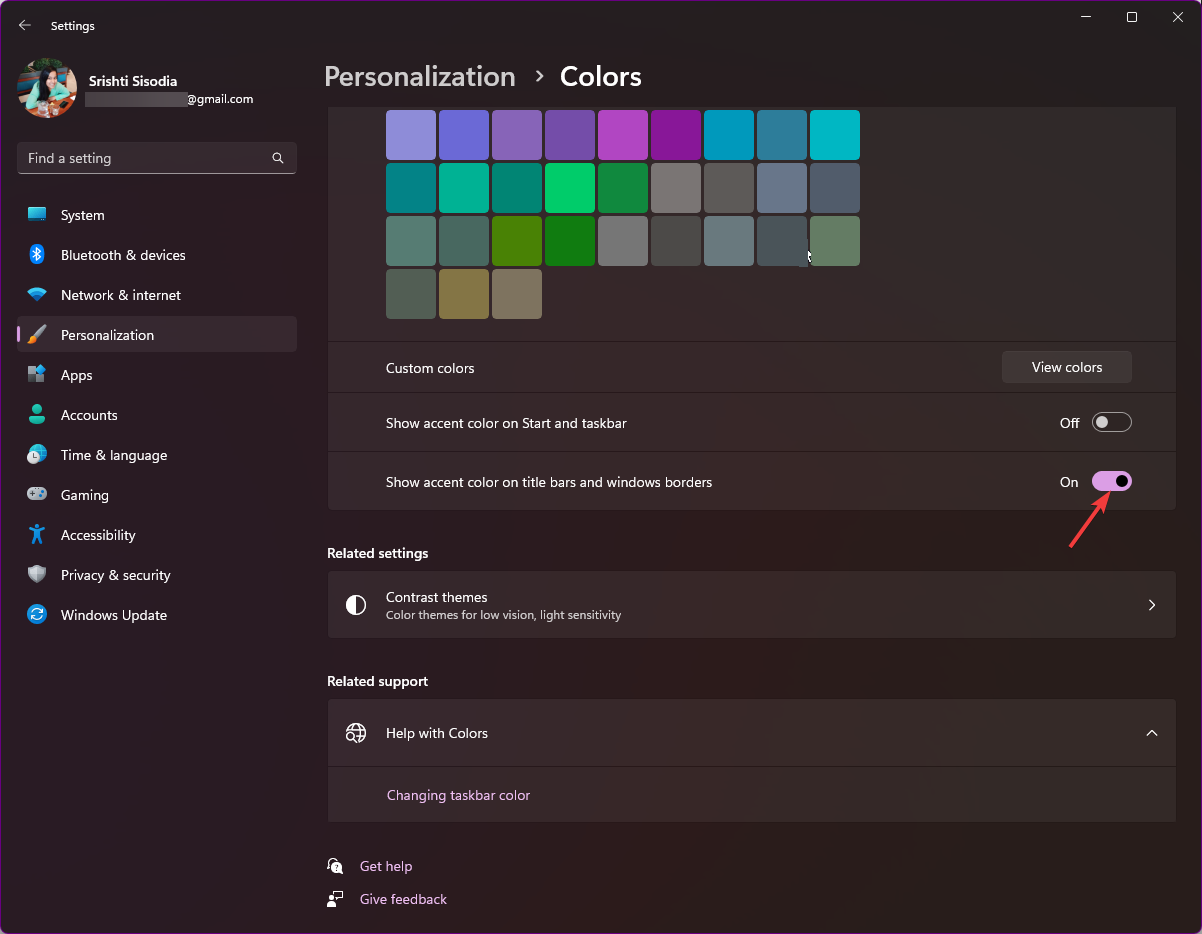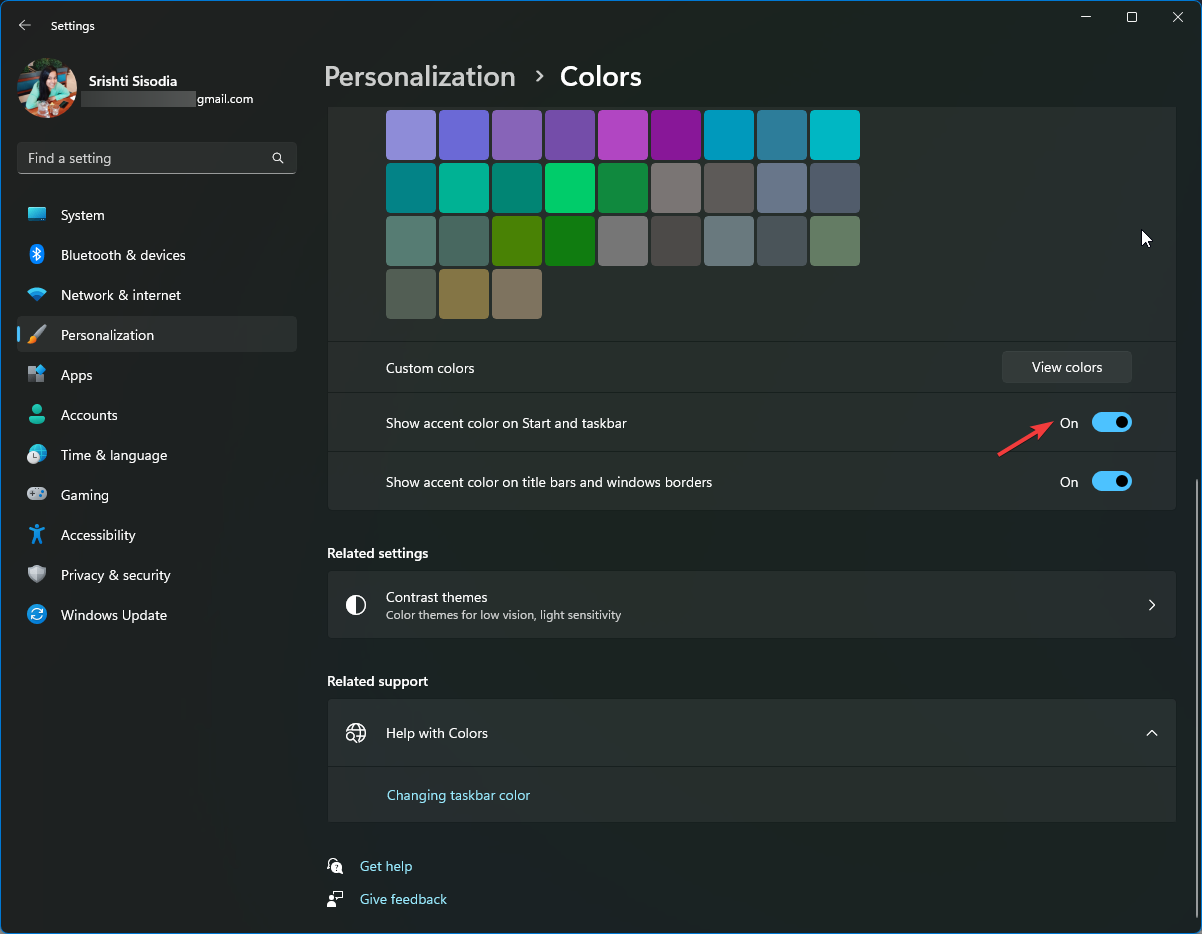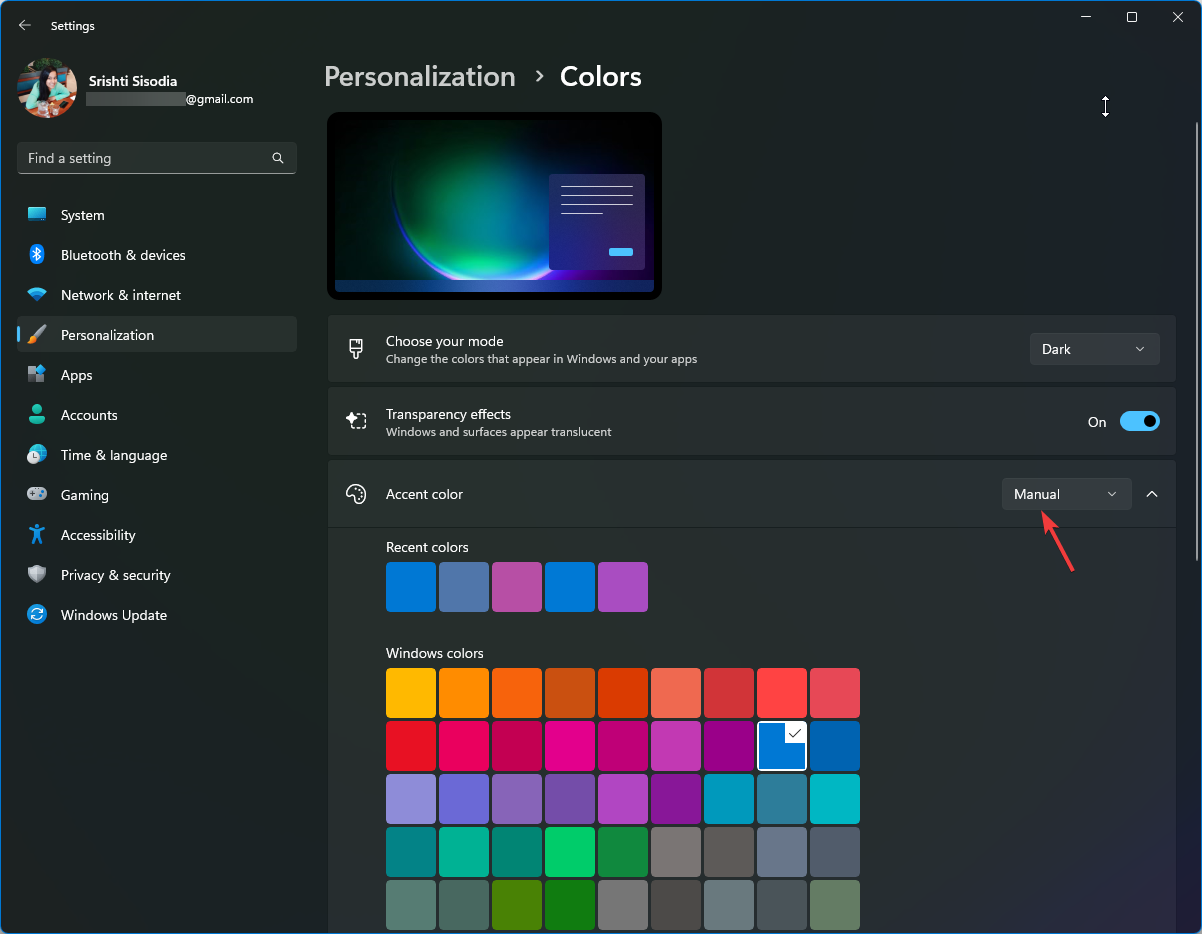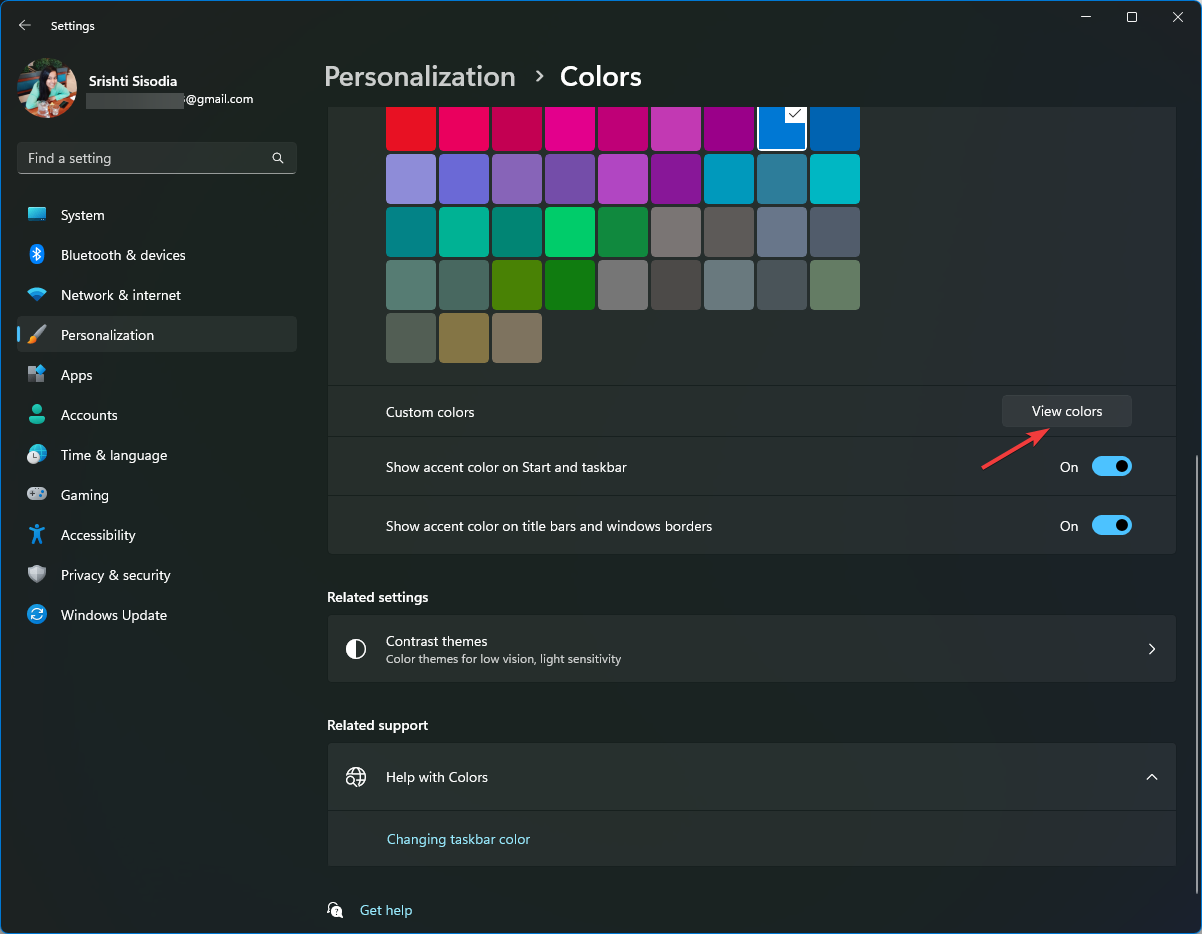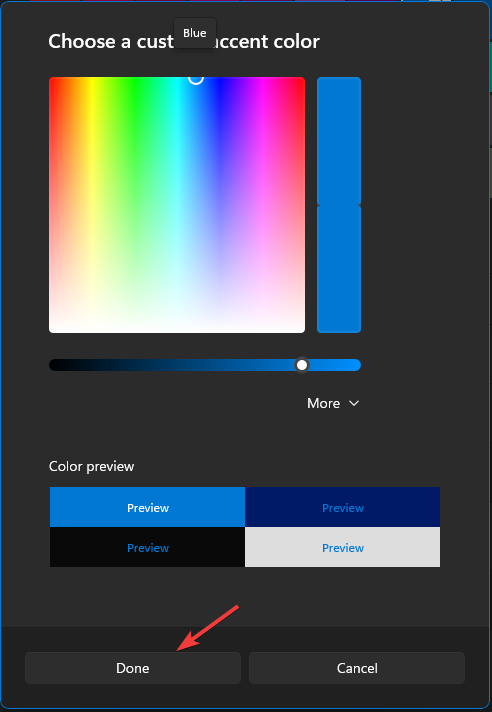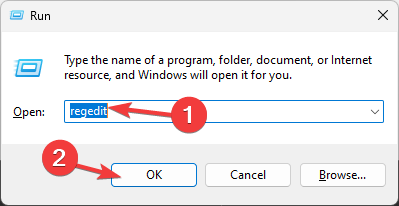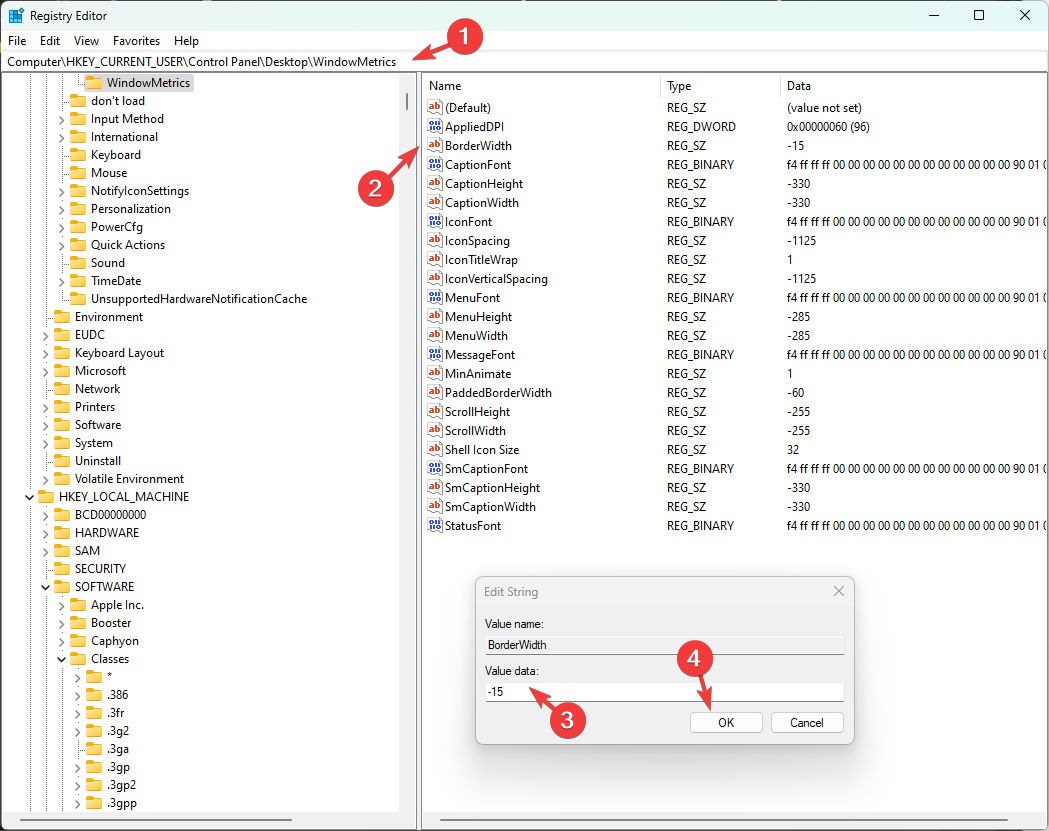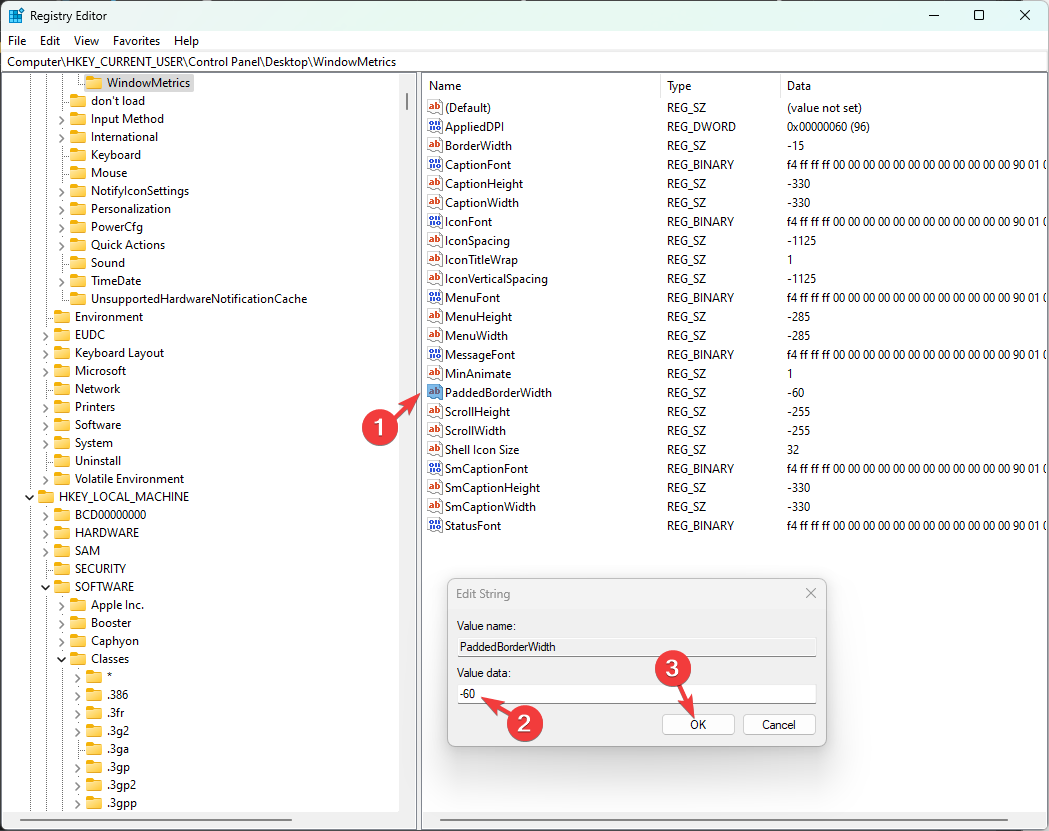How to adjust window border settings on Windows 11: Change color and size
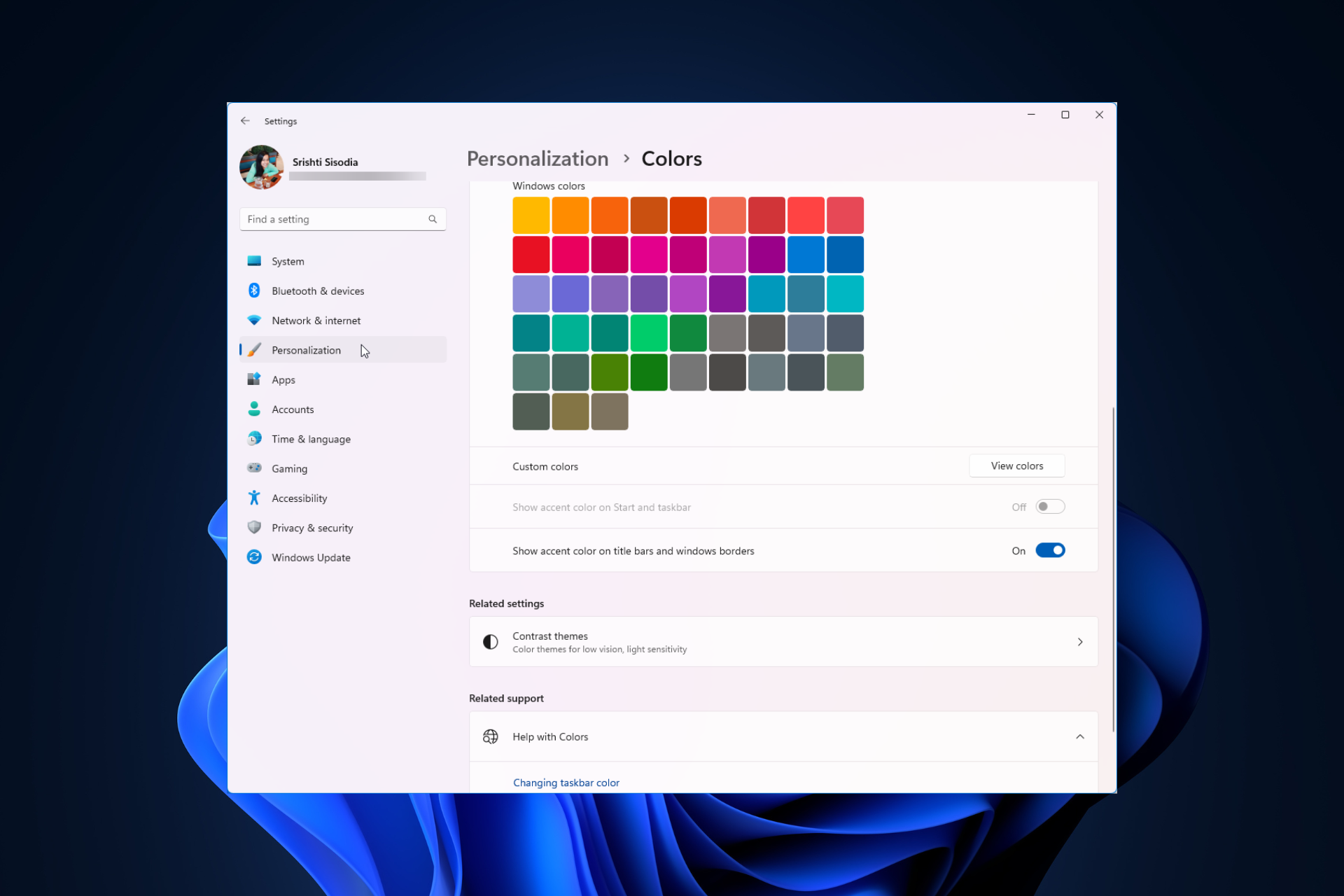
Windows 11 brings fresh and elegant design to the forefront; the modern interface allows you to personalize and change the finest details, such as window borders.
In this guide, we'll discuss step-by-step instructions to help you create an environment that reflects your style in the Windows operating system.
How to change window border settings?
- Press to open the "Settings" application. WindowsI
- Go to Personalization and click Color Settings.
 Color change window border settings window 11" width="643" style="max-width:90%">
Color change window border settings window 11" width="643" style="max-width:90%"> - Find the Show accent color on title bar and window borders option and switch The switch next to it.

- To show the accent color on the Start menu and taskbar, turn on the switch next to Show accent color on the Start menu and taskbar.

These steps will also help you change the color on the title bar of an active window; however, to change the color on an inactive window, read this guide.
How to change window border color on Windows 11?
- Press to open Settings; Next, go to Personalization and click on the Colors option. WindowsI
 Color Change Window Border Settings Window 11" Width="643" Height="500">
Color Change Window Border Settings Window 11" Width="643" Height="500"> - Find Accent Text Color and select Manual From the drop-down list.

- Select the desired color from the palette. If you don't like the colors, you can click Custom Color and selectView Color.

- Move the mouse pointer to the color area, click the area to pick the color, and then select it.
- ClickDoneAnd close the Settings app. Now open any window to see the color change.

How to change window border size on Windows 11?
- Press Open "Run" dialog box. WindowsR

- Type regedit and click OK to open Registry Editor.
- Navigate to this path:
<strong>Computer\HKEY_CURRENT_USER\Control Panel\Desktop\WindowMetrics</strong> - Find the Border Width option in the right pane and double-click it to open it.

- Change "Numerical Data" to any value between 0 and -750, Then click "OK".
- Now find the padding border width, double click on it and change the value data to 0 and click OK.

- Close Registry Editor and restart your computer to change the border thickness.
Additional changes to Windows borders in Windows 11
- Rounded Corners – Windows 11 introduces rounded corners for all windows, including title bars and borders, giving the operating system a cohesive look.
- New Accent Color Features– Customize the color of the border and title bar regardless of the selected theme; launch Settings>Personalization>Colors, then launch Theme Colors and select a color.
- Dark Theme – This can be applied system-wide; to do this, press Open Settings>Personalization>Color, Find the Select your mode and select the Dark drop-down menu.WindowsI
- Light Theme – Select a light theme for the entire system ;To do this, open Settings>Personalization>Color and select your mode, then select Lights on the drop-down menu.
- Color on title bar – Open Settings>Personalization>Color, and then turn on the toggle switch for the Show theme color option on title bar and window border, Then select a color from the palette.
For advanced color customization of window borders, taskbar, and title bar, you can use Winaero Tweaker, a free, easy-to-use tool.
To use it, all you need to do is download the tool, launch it, go to the Appearance option, and customize the settings under it.
How to remove window borders in Windows 11?
To disable window border color on Windows 11, you can simply turn off the toggle next to "Show theme color on title bar and window borders" in the Settings app.
You can also change the taskbar color to match the window border to match it; read this guide for detailed steps.
The above is the detailed content of How to adjust window border settings on Windows 11: Change color and size. For more information, please follow other related articles on the PHP Chinese website!

Hot AI Tools

Undresser.AI Undress
AI-powered app for creating realistic nude photos

AI Clothes Remover
Online AI tool for removing clothes from photos.

Undress AI Tool
Undress images for free

Clothoff.io
AI clothes remover

AI Hentai Generator
Generate AI Hentai for free.

Hot Article

Hot Tools

Notepad++7.3.1
Easy-to-use and free code editor

SublimeText3 Chinese version
Chinese version, very easy to use

Zend Studio 13.0.1
Powerful PHP integrated development environment

Dreamweaver CS6
Visual web development tools

SublimeText3 Mac version
God-level code editing software (SublimeText3)

Hot Topics
 Solution: Your organization requires you to change your PIN
Oct 04, 2023 pm 05:45 PM
Solution: Your organization requires you to change your PIN
Oct 04, 2023 pm 05:45 PM
The message "Your organization has asked you to change your PIN" will appear on the login screen. This happens when the PIN expiration limit is reached on a computer using organization-based account settings, where they have control over personal devices. However, if you set up Windows using a personal account, the error message should ideally not appear. Although this is not always the case. Most users who encounter errors report using their personal accounts. Why does my organization ask me to change my PIN on Windows 11? It's possible that your account is associated with an organization, and your primary approach should be to verify this. Contacting your domain administrator can help! Additionally, misconfigured local policy settings or incorrect registry keys can cause errors. Right now
 How to adjust window border settings on Windows 11: Change color and size
Sep 22, 2023 am 11:37 AM
How to adjust window border settings on Windows 11: Change color and size
Sep 22, 2023 am 11:37 AM
Windows 11 brings fresh and elegant design to the forefront; the modern interface allows you to personalize and change the finest details, such as window borders. In this guide, we'll discuss step-by-step instructions to help you create an environment that reflects your style in the Windows operating system. How to change window border settings? Press + to open the Settings app. WindowsI go to Personalization and click Color Settings. Color Change Window Borders Settings Window 11" Width="643" Height="500" > Find the Show accent color on title bar and window borders option, and toggle the switch next to it. To display accent colors on the Start menu and taskbar To display the theme color on the Start menu and taskbar, turn on Show theme on the Start menu and taskbar
 How to change title bar color on Windows 11?
Sep 14, 2023 pm 03:33 PM
How to change title bar color on Windows 11?
Sep 14, 2023 pm 03:33 PM
By default, the title bar color on Windows 11 depends on the dark/light theme you choose. However, you can change it to any color you want. In this guide, we'll discuss step-by-step instructions for three ways to change it and personalize your desktop experience to make it visually appealing. Is it possible to change the title bar color of active and inactive windows? Yes, you can change the title bar color of active windows using the Settings app, or you can change the title bar color of inactive windows using Registry Editor. To learn these steps, go to the next section. How to change title bar color in Windows 11? 1. Using the Settings app press + to open the settings window. WindowsI go to "Personalization" and then
 OOBELANGUAGE Error Problems in Windows 11/10 Repair
Jul 16, 2023 pm 03:29 PM
OOBELANGUAGE Error Problems in Windows 11/10 Repair
Jul 16, 2023 pm 03:29 PM
Do you see "A problem occurred" along with the "OOBELANGUAGE" statement on the Windows Installer page? The installation of Windows sometimes stops due to such errors. OOBE means out-of-the-box experience. As the error message indicates, this is an issue related to OOBE language selection. There is nothing to worry about, you can solve this problem with nifty registry editing from the OOBE screen itself. Quick Fix – 1. Click the “Retry” button at the bottom of the OOBE app. This will continue the process without further hiccups. 2. Use the power button to force shut down the system. After the system restarts, OOBE should continue. 3. Disconnect the system from the Internet. Complete all aspects of OOBE in offline mode
 How to enable or disable taskbar thumbnail previews on Windows 11
Sep 15, 2023 pm 03:57 PM
How to enable or disable taskbar thumbnail previews on Windows 11
Sep 15, 2023 pm 03:57 PM
Taskbar thumbnails can be fun, but they can also be distracting or annoying. Considering how often you hover over this area, you may have inadvertently closed important windows a few times. Another disadvantage is that it uses more system resources, so if you've been looking for a way to be more resource efficient, we'll show you how to disable it. However, if your hardware specs can handle it and you like the preview, you can enable it. How to enable taskbar thumbnail preview in Windows 11? 1. Using the Settings app tap the key and click Settings. Windows click System and select About. Click Advanced system settings. Navigate to the Advanced tab and select Settings under Performance. Select "Visual Effects"
 Display scaling guide on Windows 11
Sep 19, 2023 pm 06:45 PM
Display scaling guide on Windows 11
Sep 19, 2023 pm 06:45 PM
We all have different preferences when it comes to display scaling on Windows 11. Some people like big icons, some like small icons. However, we all agree that having the right scaling is important. Poor font scaling or over-scaling of images can be a real productivity killer when working, so you need to know how to customize it to get the most out of your system's capabilities. Advantages of Custom Zoom: This is a useful feature for people who have difficulty reading text on the screen. It helps you see more on the screen at one time. You can create custom extension profiles that apply only to certain monitors and applications. Can help improve the performance of low-end hardware. It gives you more control over what's on your screen. How to use Windows 11
 10 Ways to Adjust Brightness on Windows 11
Dec 18, 2023 pm 02:21 PM
10 Ways to Adjust Brightness on Windows 11
Dec 18, 2023 pm 02:21 PM
Screen brightness is an integral part of using modern computing devices, especially when you look at the screen for long periods of time. It helps you reduce eye strain, improve legibility, and view content easily and efficiently. However, depending on your settings, it can sometimes be difficult to manage brightness, especially on Windows 11 with the new UI changes. If you're having trouble adjusting brightness, here are all the ways to manage brightness on Windows 11. How to Change Brightness on Windows 11 [10 Ways Explained] Single monitor users can use the following methods to adjust brightness on Windows 11. This includes desktop systems using a single monitor as well as laptops. let's start. Method 1: Use the Action Center The Action Center is accessible
 Microsoft teases Windows 7 Aero-like design for Windows 11
Apr 14, 2023 pm 03:01 PM
Microsoft teases Windows 7 Aero-like design for Windows 11
Apr 14, 2023 pm 03:01 PM
<imgsrc="/uploads/20230413/16813675986437a22ed41f5.jpg"alt="Windows-11-Aero-update-696x365-1"/><p>With the release of Windows 8 and its successor, Windows 10, Microsoft gave up Support for rounded corners and AeroGlass for flatter and neutral-colored UIs. </p&g



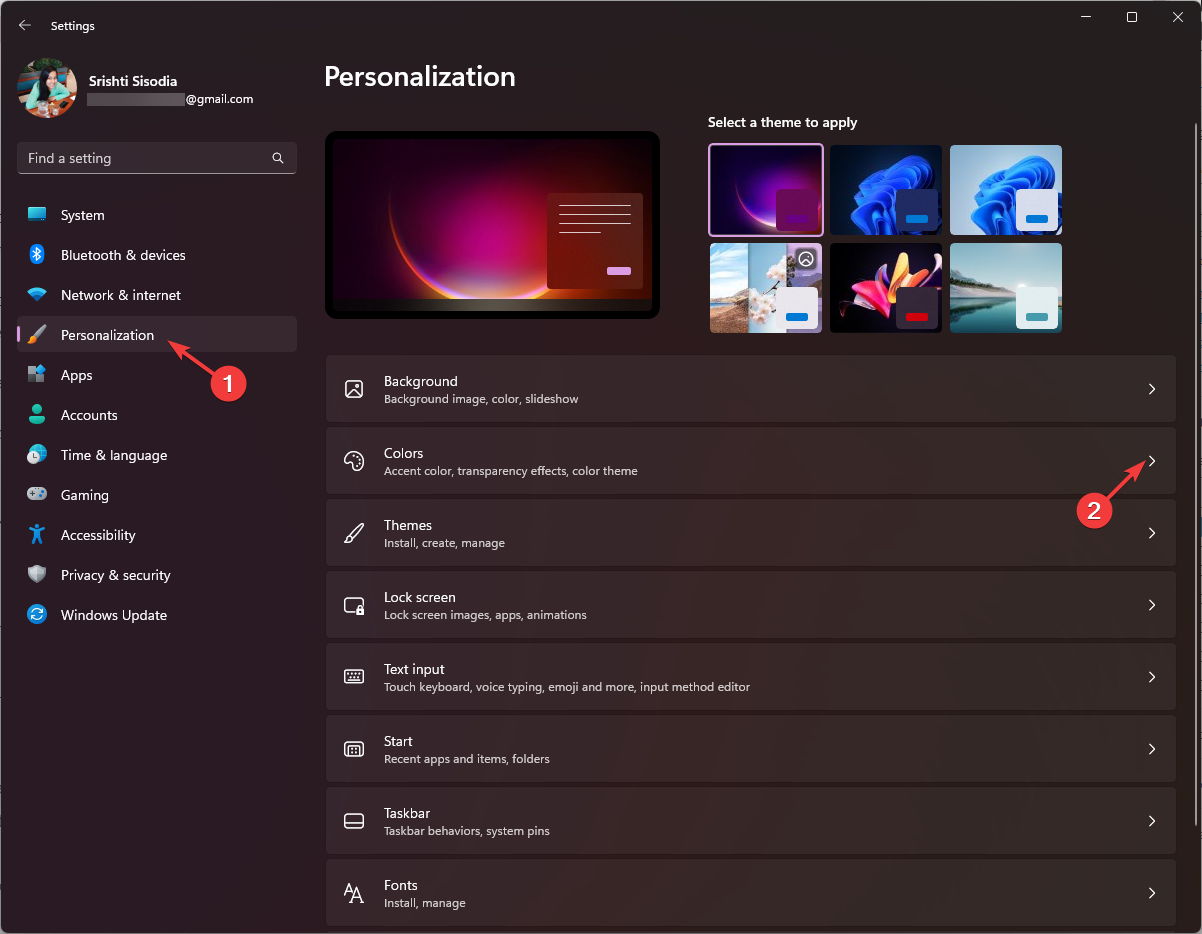 Color change window border settings window 11" width="643" style="max-width:90%">
Color change window border settings window 11" width="643" style="max-width:90%">